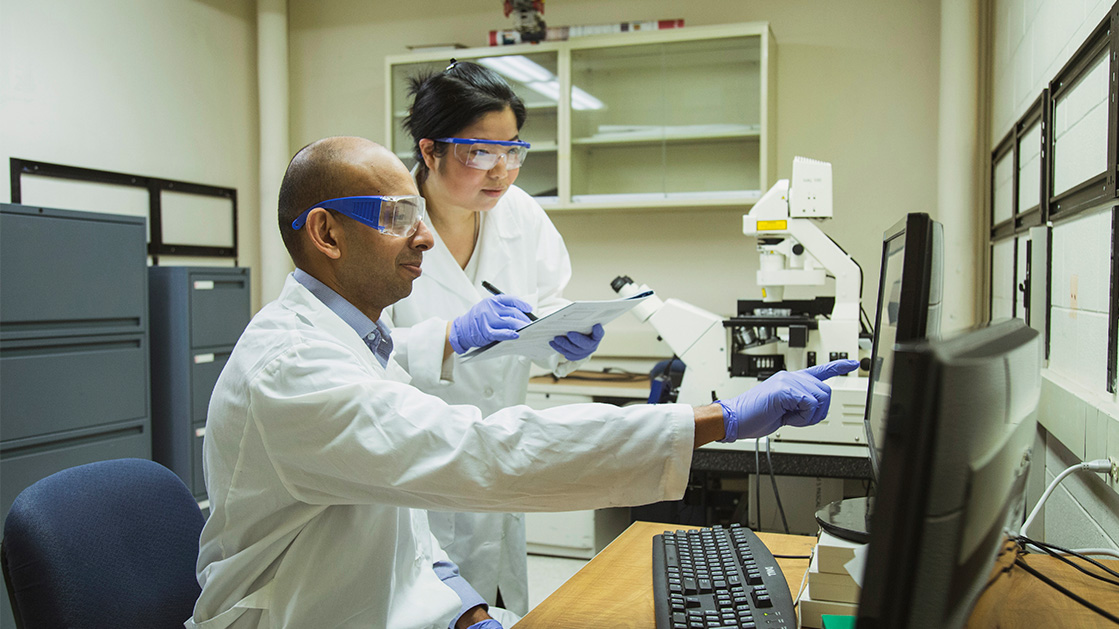
Encouraging Fat Cells to Grow
By Olivia Dimmer
A research team led by Armour College of Engineering’s Abhinav Bhushan is pioneering a new way to grow fat cells outside of the body to aid in disease treatment. By extracting cells from a patient and placing them in a microfluidic chip—a device that simulates the conditions in which cells grow in the body—doctors and researchers can test new drugs to determine what works and what doesn’t for that individual patient.
This kind of customized approach could drastically change the way doctors treat patients in the future, says Bhushan, assistant professor of biomedical engineering. His current research is geared toward recreating the microenvironments of fat tissue. By creating a discovery platform with this unique microenvironment to study these cells, Bhushan and colleagues in his lab hope to develop a new way for doctors and other researchers to test treatments for diseases such as obesity and diabetes.
“Microfluidic chips mimic the capillaries of the body,” Bhushan says. “So when you place cells into this environment, they behave like normal fat cells for over three weeks. During this time, our platform allows us to study the differentiation of precursor cells into mature adipose, which is necessary to study the long-term effects of drug molecules on cellular signals and responses.”
This model, developed by biomedical engineering graduate student Nida Tanataweethum, was recently detailed in a paper published in the research journal Biotechnology & Bioengineering. The work was carried out in collaboration with researchers at the University of Chicago and the University of Texas at San Antonio.
Tanataweethum says this new model will open the door for faster, cheaper research.
“Previously, researchers would use an animal model,” Tanataweethum says. “But with that you use a lot of money and also you use a lot of time. With microfluidic chips, it gives you relevant results while reducing the time and reducing the cost.”
As part of the Microfluidic Drug Microbiota Interaction Platform project team, Bhushan and colleagues at IIT Research Institute are building a discovery platform to examine the interactions between approved drugs and microbiota in the digestive system using a more physiologically relevant model of the intestine. The team is a finalist for the $1 million Nayar Prize II.